| Author |
 Replies: 19 / Views: 1,633 Replies: 19 / Views: 1,633 |
|
Valued Member
United States
156 Posts |
|
|
Hi there! Would anybody be able to share how such 'serrated perforations' were produced? These perforations do not seem to be produced using the usual perforating machines. Thanks! 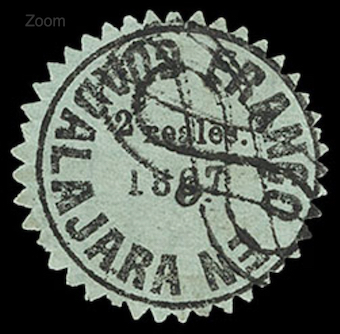 |
|
Send note to Staff
|
|
|
|
|
Bedrock Of The Community
Australia
38679 Posts |
|
|
Pillar Of The Community
Netherlands
5356 Posts |
|
|
See the uneven tips? That points at tearing.
A punch perforator can cut any shape. Leave some perforation tips uncut and you can have such perforations. |
Send note to Staff 
|
|
|
Bedrock Of The Community
11509 Posts |
|
|
Bedrock Of The Community
Australia
38679 Posts |
|
|
Opinion. I doubt it, an engineered die, or punch would tend to give consistant diamond shaped contours. I think this was an handstruck impression, and someone has made it fancy. http://stampforgeries.com/forged-st...xico-locals/ 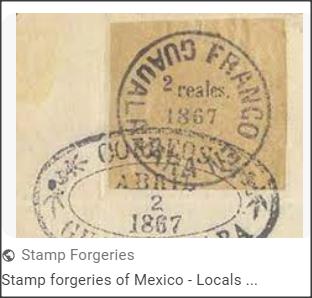 On Thursday, Jan. 21, Spink will offer a specialized collection of Guadalajara, Mexico, provisional issues. One of the items in the sale is an 1867 4-real blue stamp with serrated perforations (Scott 19B) and a "Franco en/Guadalajara" cancellation. Spink estimates this stamp at £15,000-£20,000 (roughly $20,250-$27,000). 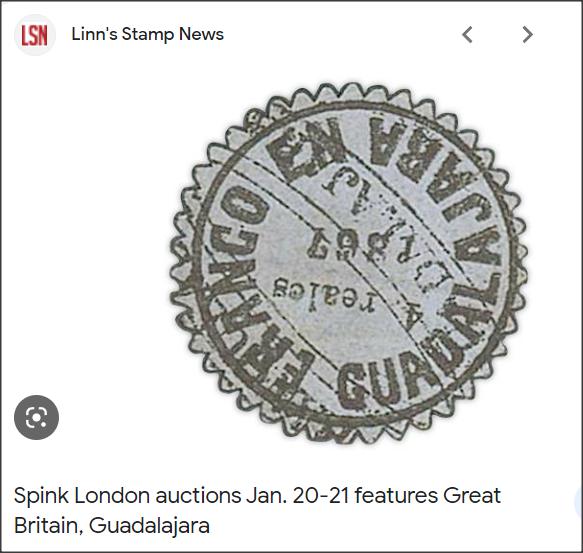 |
Send note to Staff 
|
| Edited by rod222 - 12/07/2022 08:59 am |
|
|
Bedrock Of The Community
Australia
38679 Posts |
|
|
Any members advise what the variety "B" of Mexico Guadalajara Sc#19
to command such a price, please? |
Send note to Staff 
|
|
|
Pillar Of The Community
Netherlands
5356 Posts |
|
|
The genuineness does not change how they can be made.
In this specific case, I wonder whether some device was used. Quite a lot of incisions appear to be equidistant to the centre of the stamp. That would be very difficult to achieve with scissors. |
Send note to Staff 
|
|
|
Pillar Of The Community
United States
3159 Posts |
|
|
Die cutting machines developed first for shoe leather in the mid-1800s and expanded to die cutting of other flat thin materials including paper.
Edit:
Which friend or relative make shaped holiday cookies? Go to that person and ask to see their collection of older cookie cutters which are metal in various shapes. Same process, strong medal shapes created, edge sharpened and affixed to a machine to be repetitive and there is you paper die cutter.
The cuts on the item shown is nothing compared to early fancy die cut valentines. |
Send note to Staff 
|
| Edited by Parcelpostguy - 12/07/2022 4:05 pm |
|
|
Bedrock Of The Community
Australia
38679 Posts |
|
|
Rouletting
Although the term "rouletting" suggests the operation is performed by means of a spur wheel, in fact, the process is usually carried out by a printer's PERFORATIVE RULE.
This is a thin sheet of brass with a very sharp edge, notched at regular intervals.
Rouletting can be either colour or plain
In colour the rule is set round the design of each stamp in is inked at the same time as the rest of the type.
Example 1867 issues of Thurn and Taxis
When the PERFORATIVE RULE is otherwise shaped, it can form
"perce en serpentine" 1860 Finland
"perce en scie" saw tooth 1861 Bremen
"perce en pointes" Queensland 1d 1899
"perce en lignes obliques" Roumania 1866
(and early Tasmania)
"perc en arc" (suggest Guadalajara)
Brunswick 1864
"perce en losanges" (perc en croix )
PERFORATIVE RULE is shaped in piercing the paper in little crosses
1866 Portugal (Madeira)
|
Send note to Staff 
|
| Edited by rod222 - 12/07/2022 5:50 pm |
|
|
Pillar Of The Community
6060 Posts |
|
|
I agree fully with the direction Parcelpostguy takes. The answer requires thinking beyond philately. As an example, here is a 3" diameter paper seal on a document dated 1853. 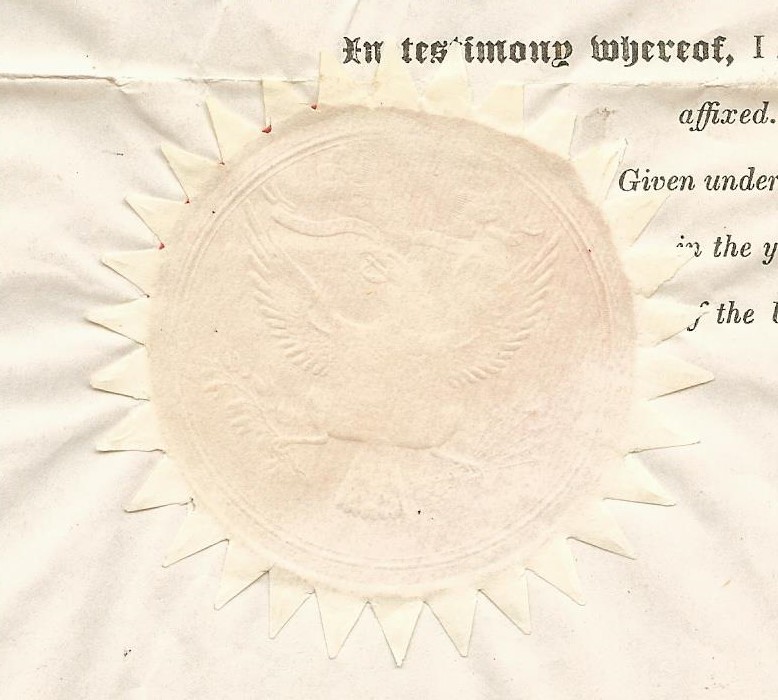 |
Send note to Staff 
|
| Edited by John Becker - 12/07/2022 6:14 pm |
|
|
Bedrock Of The Community
11509 Posts |
|
|
Rod hit it on the head. It is rouletted as per MEPSI certificate descriptions. |
Send note to Staff 
|
|
|
Bedrock Of The Community
Australia
38679 Posts |
|
|
Quote:
It is rouletted as per MEPSI certificate descriptions. Rog, can you offer images? links? or anything? As my trade was "fitter / turner" I find it hard to imagine how these "rules" worked and long have been intrigued by "roulettes" Fred Melville the only author I have found to address these in a cursory manner. Keen to learn more. |
Send note to Staff 
|
| Edited by rod222 - 12/07/2022 8:56 pm |
|
|
Bedrock Of The Community
Australia
38679 Posts |
|
|
Pillar Of The Community
6060 Posts |
|
|
Rogdcam, Rod222,
To play devil's advocate ....
Please explain and illustrate to us how the seal on the 1853 document I posted was mass produced in that era?
Additionally, differentiate between die cutting and rouletting in your own words.
(I think there are some technical differences in the process and the effect.)
Thank you. |
Send note to Staff 
|
|
|
Bedrock Of The Community
Australia
38679 Posts |
|
|
The difference is easily understood,
what is not understood, is the process used for particular items shown
That's why a good example of the genuine Guadalajura, requires inspection
The original poster wanted explained how the "serrations" were applied to the example shown.
A cookie type die cutter, would evidence similar die shapes between stamps
That was not evident on the two examples shown
A "serrate" separation in Philatelic terms generally refers to a "roulette" description.
The basic difference remains constant.
Die cutting is similar to rouletting in that the paper between stamp designs is cut by dies. It differs from rouletting in that rouletting leaves gaps between the cuts where the stamps are still attached to each other. (However small they may be)
To ascertain truth on how your document seal was produced, requires research
and close inspection of the item, together with literature on the seal.
It could be either.
|
Send note to Staff 
|
| Edited by rod222 - 12/07/2022 11:26 pm |
|
|
Pillar Of The Community
6060 Posts |
|
|
Quote:
Die cutting is similar to rouletting in that the paper between stamp designs is cut by dies. It differs from rouletting in that rouletting leaves gaps between the cuts where the stamps are still attached to each other. No. Die cutting can make continuous or interrupted cuts. Consider this box of sandwich baggies. 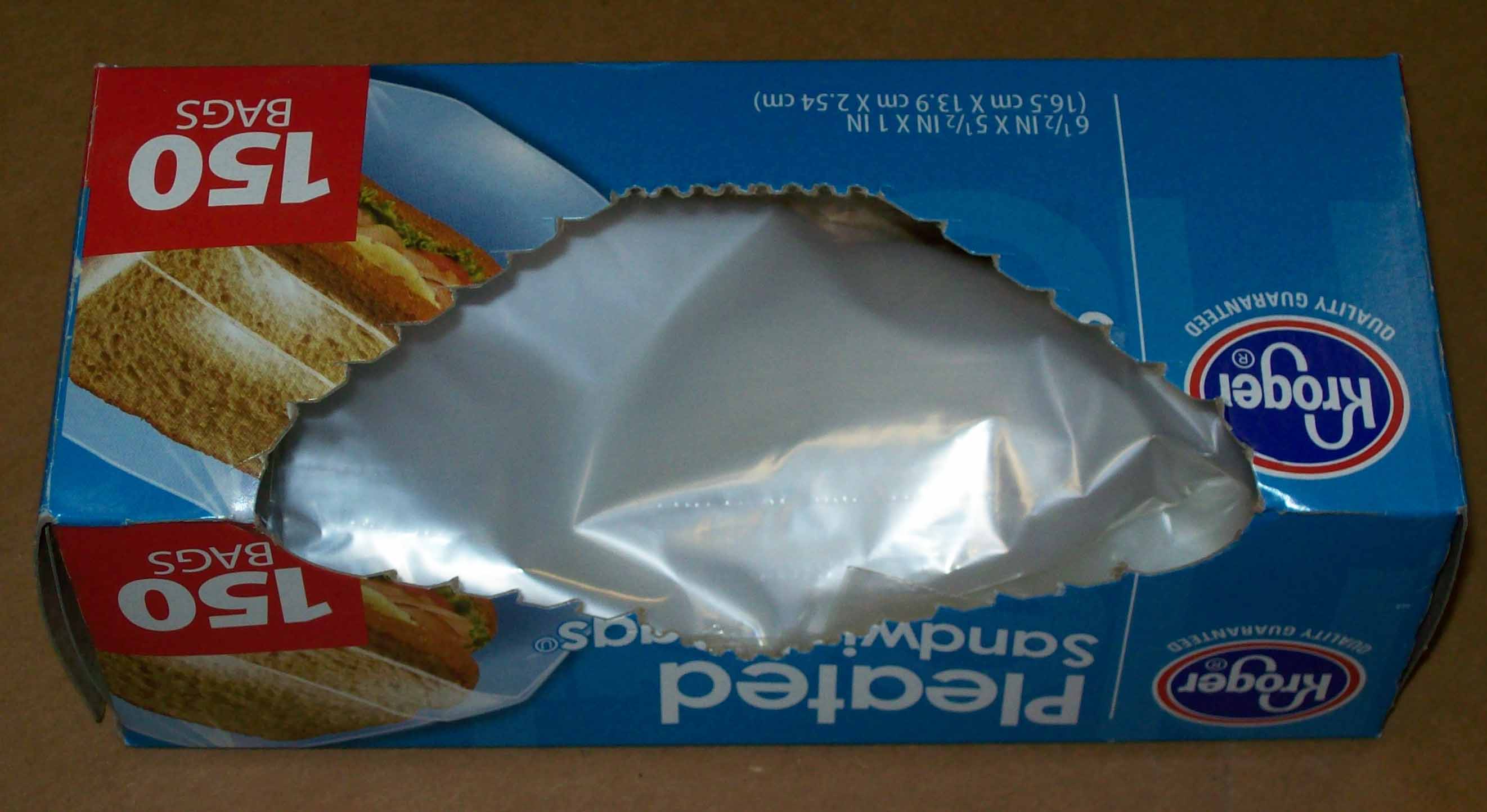 Various knives (to cut or roulette) and blunt rules (to create creases for folding) are set to die cut/crease the blank from a large sheet of paperboard. The process uses continuous-cutting blades for the perimeter and serrated knives to make the die cuts the rip-off area to remove the product. I may be suggesting that die-cutting is a specific process. Rouletting is a result of potentially several different processes (a stamping press like the box above, a rotary operation like a tracing wheel, etc). |
Send note to Staff 
|
|
 Replies: 19 / Views: 1,633 Replies: 19 / Views: 1,633 |
|
